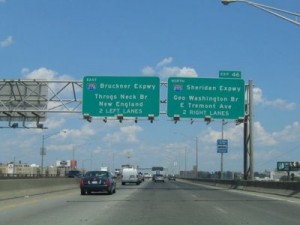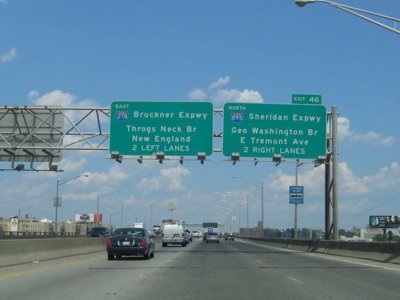
They say officials are shutting them out of planning process
South Bronx residents, activists and elected officials unhappy with the city’s recent announcement it will no longer consider tearing down the Sheridan Expressway are questioning the way planners reached their conclusion.
In a May 10 public hearing at the BankNote building in Hunts Point, officials using a federal planning grant to study the highway’s future said they had concluded that removing the Sheridan would create a domino effect of traffic problems elsewhere in the borough.
The Southern Bronx River Watershed Alliance, a coalition of advocacy groups and residents who contend the Sheridan should be razed to make way for 30 acres of housing, parks and small businesses where the highway now stands, were livid when city engineers made the announcement. The advocates contend the city has violated the spirit of a $1.5 million federal grant it received last year to study options for improving living conditions in the area, and that they have been left out of the decision-making process.
“The city’s study so far falls extremely short of the purpose of this grant and it cannot prematurely remove options from the table before completing the comprehensive analysis,” said Jessica Clemente, executive director of the Melrose-based housing advocacy group Nos Quedamos, a member of the Watershed Alliance.
Kellie Terry-Sepulveda, executive director of The Point Community Development Corporation in Hunts Point and chair of the Bronx River Alliance, says advocates and residents should keep an eye on city decision-makers to ensure they have residents’ best interests at heart.
“The status quo is unacceptable, and we need to hold the city accountable to doing everything in their power to make real change that serves everyone in our community,” Terry-Sepulveda said.
“Continuing to force our communities to live like second-class citizens, endangering our families with unsafe roads and intersections, skyrocketing asthma and air pollution, poor truck routing and blocked access to the Bronx River is not how we expect to be treated by our city government,” she continued.
South Bronx elected officials agreed the city should continue to study tearing down the Sheridan.
“I stand with the community in saying that taking any option off the table at this time is premature,” said Congressman Jose Serrano, who was influential in securing the federal funds for the Sheridan study.
“It is not right to remove a potentially life-changing option from this study,” he said.
City Councilwoman Maria Del Carmen Arroyo said the city study had raised hopes “that the South Bronx would finally be getting the attention it has long been deprived from the city, with a thorough analysis and inclusive process that was fairly done and appropriately communicated..
“Instead,” she said, “with no discussion and no notice, the city announces it wants to remove the linchpin of the study from consideration. I’m calling on the city to continue studying the Sheridan removal options.”
Some questioned the city’s transparency, and its math.
How did the city planners reach their conclusion, asked Vincent Pellecchia of the Tri-State Transportation Campaign. “This information has not been shared with the community working group,” he said.
The city’s announcement comes in the midst of negotiations with the businesses in the Hunts Point wholesale food market, whose owners have long contended that tearing down the highway would injure them by slowing deliveries to and from the market. The Hunts Point Terminal Coop Market is threatening to move to New Jersey if the city does not help modernize their aging warehouses.
But neighborhood and environmental advocates who have fought for two decades for the Sheridan’s removal contend that truckers can reach the market via the Major Deegan and Bruckner Expressways in trips speeded by redesigned exit ramps.
“The city has an opportunity to transform the Bronx for the better with an updated transportation network that benefits local residents and provides direct access to Hunts Point Market, but this is only possible if the city conducts the analysis it promised,” said area resident Elizabeth Ortega.

